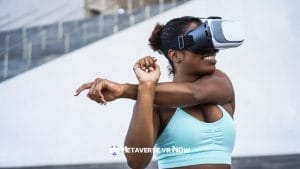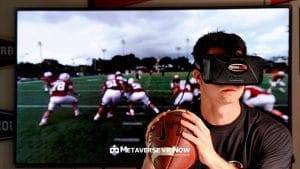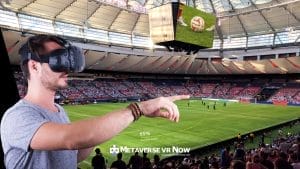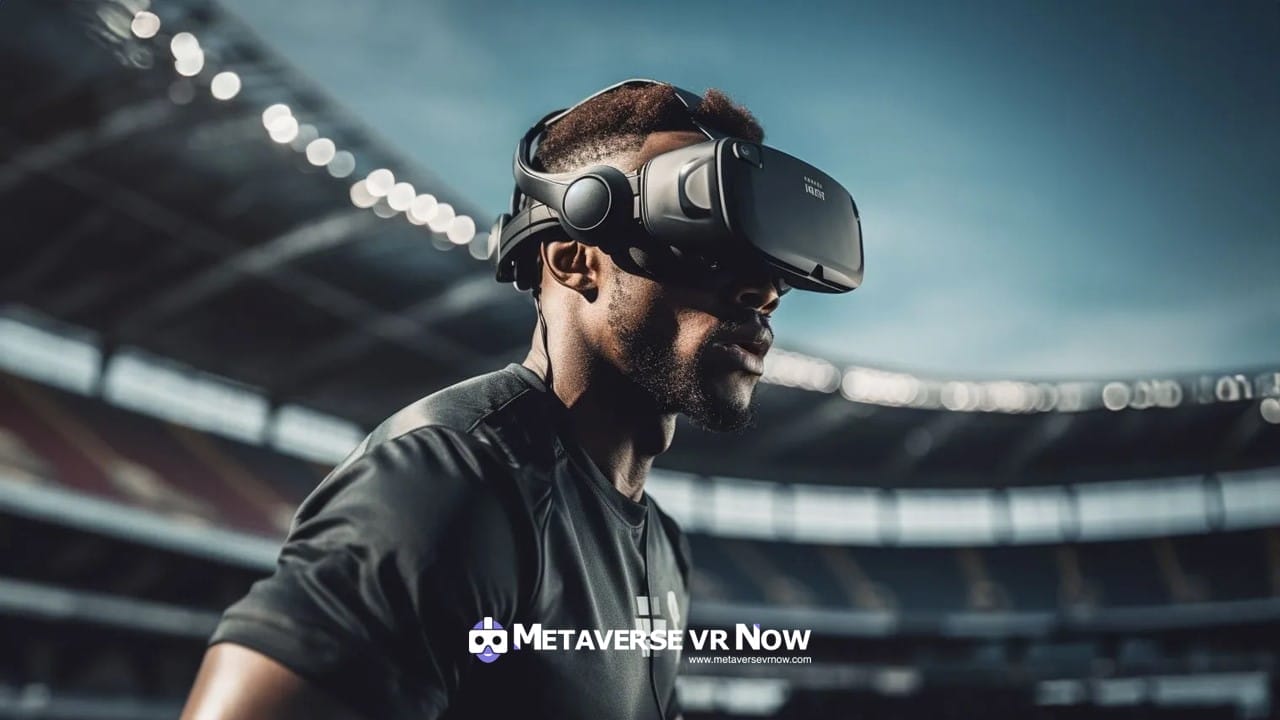Virtual Reality (VR) technology has revolutionized the way we experience entertainment, education, and even healthcare. However, its impact on the world of sports is nothing short of game-changing. Imagine being able to step into the shoes of your favorite athlete, feel the adrenaline rush of a stadium-packed game, or train with precision and accuracy like never before. VR in sports is not just a trend—it’s a powerful tool that is transforming the landscape of athletic training and fan engagement. In this article, we will explore 7 key advantages of VR in sports that demonstrate how this technology is reshaping the future of athletics as we know it.
Why VR in Sports is Advantageous?
The convergence of virtual reality (VR) technology and sports has opened up a realm of opportunities that were once unimaginable. One of the key advantages of VR in sports is its ability to enhance player training and performance by providing immersive, simulated environments for practice. Athletes can now hone their skills in realistic scenarios, giving them a competitive edge on the field or court.
Moreover, VR offers a unique perspective for both athletes and fans, allowing them to experience sporting events like never before. Fans can enjoy a front-row seat at any game, immersing themselves in the action from the comfort of their homes. On the other hand, athletes can review their performances in 3D space, identifying areas for improvement with precision and detail. With VR technology continuing to evolve rapidly, the possibilities for revolutionizing sports as we know it are truly endless.
Overview of the Benefits of VR in Sports
Immersing athletes in simulated environments can provide them with crucial mental preparation for high-pressure situations, enhancing their decision-making skills and composure under stress. VR technology allows coaches to create customizable training scenarios that cater to the specific needs of individual players, helping them improve their performance in a targeted manner. By replicating game-like conditions and settings, VR enables athletes to train more effectively and efficiently, ultimately leading to better on-field results.
Moreover, VR has revolutionized the way fans experience sports by offering immersive viewing options that bring them closer to the action than ever before. From virtual stadium tours to 360-degree live game broadcasts, fans can now feel like they are part of the game itself from the comfort of their homes. This enhanced level of engagement not only boosts fan excitement but also opens up new revenue streams for teams and leagues through innovative virtual experiences and interactive content.
Here are 7 benefits of VR in sports:
1. VR in Sports Can Enhanced Training Methods
VR technology is revolutionizing the world of sports training by offering enhanced methods that are both effective and engaging. Athletes can now step into a virtual environment that replicates real game situations, allowing them to practice and refine their skills in a controlled yet immersive setting. By simulating high-pressure scenarios, VR helps athletes develop mental resilience and decision-making abilities under stress, which are crucial for competitive success.
Furthermore, VR in sports training provides coaches with valuable insights into an athlete’s performance by tracking movements and analyzing data in real time. This data-driven approach allows for personalized feedback and tailored training programs that address specific strengths and weaknesses. Additionally, VR can be used to create customized training simulations based on an individual athlete’s needs, making sessions more efficient and targeted toward optimizing performance. With these advancements, the future of sports training is undoubtedly heading towards a realm where virtual reality plays a pivotal role in shaping the next generation of elite athletes.

2. Injury Prevention and Rehabilitation of VR in Sports
Injury prevention and rehabilitation in sports have always been crucial aspects of athlete care, and virtual reality (VR) is revolutionizing these processes. VR technology allows athletes to engage in realistic simulations that can help identify potential areas of improvement in technique or form that could lead to injuries. By practicing virtually before engaging in physical training, athletes can reduce the risk of overexertion or incorrect movements that may cause injury.
Furthermore, VR is proving to be invaluable in the rehabilitation phase post-injury. Athletes recovering from injuries can use VR simulations to gradually reintroduce movements and exercises under controlled environments, minimizing the chances of re-injury. This method not only accelerates recovery but also strengthens neural pathways associated with muscle memory, enhancing overall performance once the athlete returns to their sport. Embracing VR technology in injury prevention and rehabilitation showcases its potential to elevate the standard of care for athletes across various sports disciplines.

3. Realistic Game Simulation of VR in Sports
Imagine stepping into the shoes of your favorite athlete, feeling the rush of adrenaline as you compete in a virtual world that mirrors the intensity of real-life sports. VR technology has revolutionized game simulations, offering players the chance to experience a hyper-realistic environment where they can hone their skills and improve their performance. From basketball to soccer, VR brings an unparalleled level of immersion to sports gaming by capturing every nuance and detail with stunning accuracy.
One of the most powerful aspects of VR game simulation in sports is its ability to provide valuable training opportunities for both professional athletes and enthusiasts alike. By replicating game scenarios and environments in a lifelike manner, players can engage in realistic practice sessions that translate directly to on-field success. This high-fidelity simulation allows athletes to refine their techniques, work on strategic gameplay, and enhance their decision-making abilities in a risk-free setting—a feature that was previously unimaginable before the advent of VR technology in sports.
Furthermore, VR game simulation opens up new avenues for fan engagement and entertainment by offering spectators a firsthand experience of what it’s like to be on the field or court alongside their sporting heroes. With VR headsets becoming more accessible and affordable, fans can immerse themselves in thrilling match-ups, experiencing heart-pounding moments from a player’s perspective like never before. This innovative approach not only enhances the overall viewing experience but also bridges the gap between fans and athletes by creating shared virtual realities that blur the lines between fantasy and reality within the realm of sports.

4. Fan Engagement and Experience of VR in Sports
As technology continues to revolutionize the sports industry, virtual reality (VR) is undeniably transforming fan engagement and experience. Through VR, fans are no longer bound by geographical limitations; they can now immerse themselves in the action from anywhere in the world. This level of accessibility not only broadens the reach of sports events but also enhances fan interaction by bringing them closer to their favorite teams and athletes.
Moreover, VR offers an unparalleled level of immersion that traditional viewing experiences cannot match. Fans can step into the shoes of their favorite players, experiencing thrilling moments from a first-person perspective. This level of intimacy creates a deep emotional connection between fans and sports, fostering a sense of loyalty and passion that transcends physical barriers. Additionally, interactive VR experiences such as live chats with players or virtual meet-and-greets further enhance fan engagement and create lasting memories for supporters.

5. Data Analytics and Performance Tracking of VR in Sports
Data analytics and performance tracking have revolutionized the way we perceive sports, and when integrated with Virtual Reality (VR), they take athlete training and fan engagement to a whole new level. Through VR simulations, coaches can gather real-time data on an athlete’s movements, reaction times, and decision-making processes. By analyzing this data, they can pinpoint strengths and weaknesses with accuracy, enabling targeted training programs for enhanced performance.
The beauty of utilizing VR in sports lies in its ability to provide detailed insights into an athlete’s performance that may not be noticeable during traditional training methods. With advanced motion sensors and tracking technology embedded in VR systems, coaches can delve deep into metrics like speed, acceleration, angles of movement, and biomechanics. This granular level of analysis helps in crafting personalized strategies for each player based on their unique skill sets and areas requiring improvement.

6. Global Accessibility and Inclusivity of VR in Sports
Global accessibility and inclusiveness of VR in sports have the potential to revolutionize how individuals from all walks of life engage in athletic activities. VR technology breaks down geographical barriers, enabling fans worldwide to immerse themselves in live sporting events as if they were right there in the stadium. By providing a realistic and interactive experience, VR promotes inclusivity by catering to diverse audiences, including those with disabilities who may not have the physical ability to attend traditional sporting events. This level of accessibility can significantly enhance fan engagement and create a more inclusive sports community on a global scale.
Moreover, VR opens up new avenues for participation in sports for individuals who may face limitations due to financial constraints or a lack of facilities in their local area. Virtual training programs and simulations allow aspiring athletes to hone their skills regardless of their location or resources, leveling the playing field and increasing opportunities for talent development worldwide. As VR technology becomes more accessible and affordable, it has the potential to democratize access to sports training and competitions, fostering a more diverse and inclusive landscape for athletes across different countries and socio-economic backgrounds.

7. Marketing and Revenue Generation of VR in Sports
Marketing and revenue generation present exciting avenues for VR in the world of sports. With the immersive experience that VR offers, marketing opportunities abound through partnerships with sports teams, leagues, and brands looking to tap into this burgeoning technology. The ability to provide fans with unique experiences such as virtual stadium tours, live game simulations, and interactive training sessions can attract a wide audience and create lucrative sponsorship deals.
Furthermore, VR opens up new revenue streams through virtual ticket sales for live games or events. Virtual merchandise stores accessible through VR platforms enable fans to purchase team memorabilia or exclusive products without leaving their homes. By leveraging the groundbreaking capabilities of VR technology in sports marketing strategies, organizations can not only drive engagement but also boost their bottom line significantly.

Concluding Thoughts: Advantages of VR in Sports
So, as we conclude our exploration of the advantages of VR in sports, it becomes evidently clear that this technology is indeed a game-changer in the world of athletics. One major benefit is the ability for athletes to train more efficiently and effectively without putting their bodies at risk. Through VR simulations, players can practice complex game scenarios repeatedly, improving muscle memory and decision-making skills.
Furthermore, VR enhances fan engagement by offering immersive experiences that bring supporters closer to the action than ever before. Whether it’s experiencing a live game from a player’s perspective or exploring behind-the-scenes footage, virtual reality has the power to create unforgettable moments for sports enthusiasts worldwide. The future of sports is being reshaped by VR technology, revolutionizing how athletes train and compete while transforming the spectator experience into something truly extraordinary.






